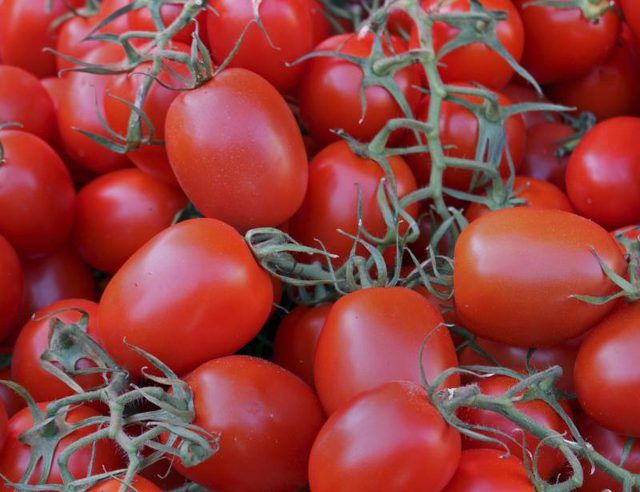Bulbs
Flower Basics
Flower Beds & Specialty Gardens
Flower Garden
Garden Furniture
Garden Gnomes
Garden Seeds
Garden Sheds
Garden Statues
Garden Tools & Supplies
Gardening Basics
Green & Organic
Groundcovers & Vines
Growing Annuals
Growing Basil
Growing Beans
Growing Berries
Growing Blueberries
Growing Cactus
Growing Corn
Growing Cotton
Growing Edibles
Growing Flowers
Growing Garlic
Growing Grapes
Growing Grass
Growing Herbs
Growing Jasmine
Growing Mint
Growing Mushrooms
Orchids
Growing Peanuts
Growing Perennials
Growing Plants
Growing Rosemary
Growing Roses
Growing Strawberries
Growing Sunflowers
Growing Thyme
Growing Tomatoes
Growing Tulips
Growing Vegetables
Herb Basics
Herb Garden
Indoor Growing
Landscaping Basics
Landscaping Patios
Landscaping Plants
Landscaping Shrubs
Landscaping Trees
Landscaping Walks & Pathways
Lawn Basics
Lawn Maintenance
Lawn Mowers
Lawn Ornaments
Lawn Planting
Lawn Tools
Outdoor Growing
Overall Landscape Planning
Pests, Weeds & Problems
Plant Basics
Rock Garden
Rose Garden
Shrubs
Soil
Specialty Gardens
Trees
Vegetable Garden
Yard Maintenance
How to Grow Roma Tomatoes
How to Grow Roma Tomatoes. A vegetable garden isn't complete without a few tomato plants (*Lycopersicon esculentum*). When deciding among all the available varieties, don't overlook "Roma" plants, which have egg-shaped, meaty tomatoes that are equally good for tomato sauce or fresh-eating. "Roma" is easy to grow and just needs...

A vegetable garden isn't complete without a few tomato plants (Lycopersicon esculentum). When deciding among all the available varieties, don't overlook "Roma" plants, which have egg-shaped, meaty tomatoes that are equally good for tomato sauce or fresh-eating. "Roma" is easy to grow and just needs warm weather, sun and a bit of care now and then to produce a heavy crop.
Getting a Good Start
Like all tomatoes, the "Roma" variety is frost-sensitive and grows as an annual in all parts of the United States. You can start your own plants indoors, sowing seeds in pots or flats about six or eight weeks before your last expected spring frost. Use sterile potting soil or a soil-less mixture, and plant seeds about 1/8 inch deep. Keep them in a sunny window with lightly moist soil until ready to plant outdoors. You can also purchase transplants from a garden center, but wait to buy them until a day or two before you're ready to plant.
Set seedlings in the garden when nighttime temperatures stay above 45 degrees Fahrenheit, and use row covers or plastic caps to protect them from unexpected cold -- remove these when weather warms to prevent overheating.
Setting in the Garden
Plant "Roma" seedlings in a spot that gets full sun for at least six to eight hours daily; set each plant extra-deep in its hole, so that about *two-thirds of the stem is buried. The part of the stem under soil sprouts roots, making a strong plant. Space plants at least 1 or 2 feet apart to help ensure good air circulation.
Like all tomatoes, "Romas" need a steady supply of water, with about 1 inch per week -- including rain -- being ideal, so provide supplemental water during dry spells. Add a few inches of organic mulch under the plants once the soil is warm, to help conserve soil moisture while also keeping down weeds, but keep it back several inches from each stem to discourage fungal growth.
For a Heavy Crop
The "Roma" tomato plant is a determinate variety that's compact, growing to a final height of 4 to 6 feet and ripening most of its 3-inch-long fruits in 73 to 80 days after planting. You can promote a heavy crop of meaty fruits by giving the plant a nutrient boost during its growing season.
Feed the plants with a 5-10-10 granular formula, starting when the first small, green tomatoes appear. Make a 1-inch-deep furrow around each plant, about 6 inches away from the stem, and work 1 1/2 tablespoons of fertilizer into the soil, being careful not to disturb roots -- this is called side-dressing. Keep the fertilizer away from the leaves to prevent burning, and water it into the soil well. Avoid high-nitrogen fertilizers because these tend to promote abundant foliage over fruits. Repeat the feeding process every three weeks until new fruits stop developing.
Other Care and Possible Problems
The "Roma" tomato tends to have some natural resistance to fungal diseases called *wilts" that can cause poor growth, low crop yields and, in a severe case, plant death. To help prevent these problems, space plants properly, water early in the day and at the plant's base to keep foliage dry, and clear away plant debris regularly. Keep weeds down to increase air circulation and, if you experience fungal problems, plant in a different spot each year.
Like all tomatoes, this plant can attract large green hornworm caterpillars or striped Colorado potato beetles; control these by hand-picking when they appear. Aphids, small green insects, and whiteflies, tiny white flying insects, can also attack a plant and slow its growth. Use a strong stream of water to remove these, but do this on a sunny day when foliage dries quickly.